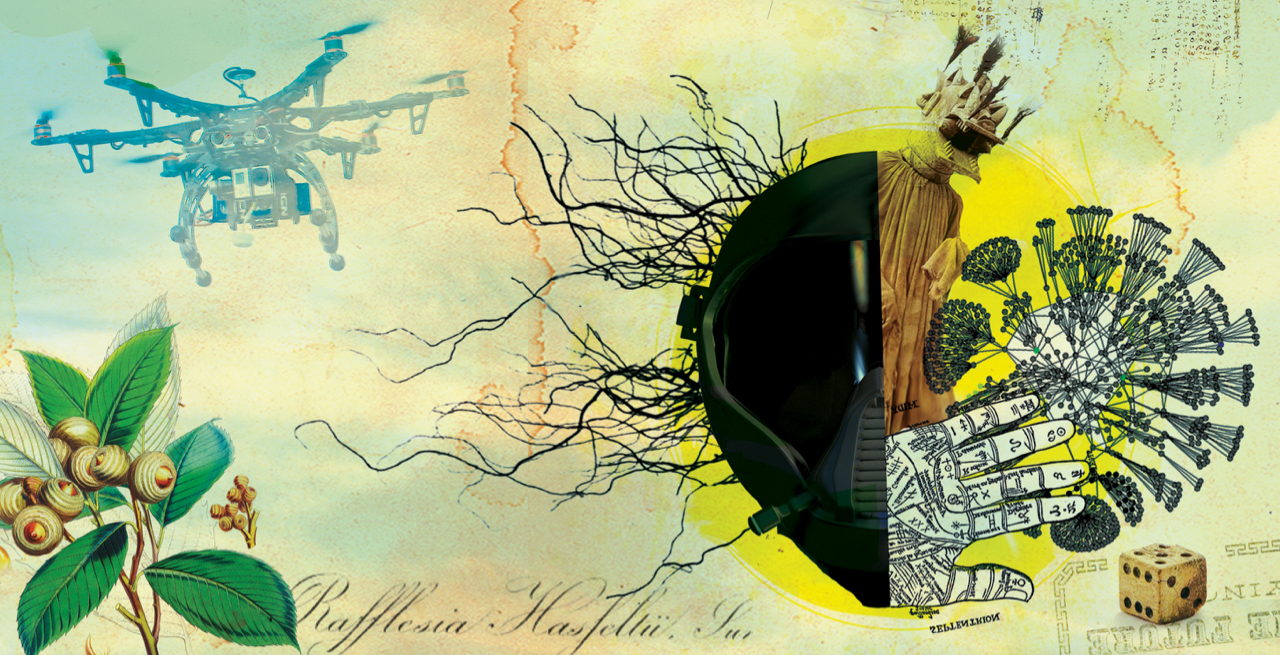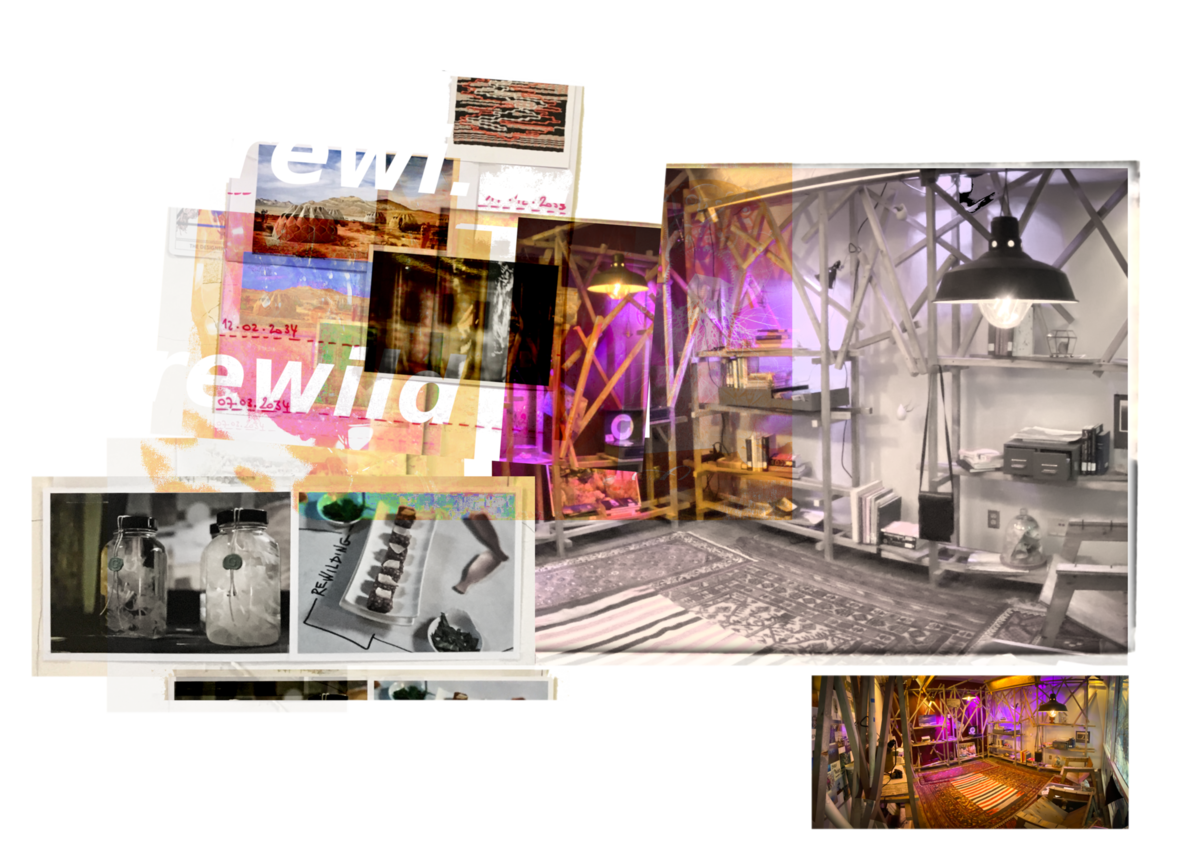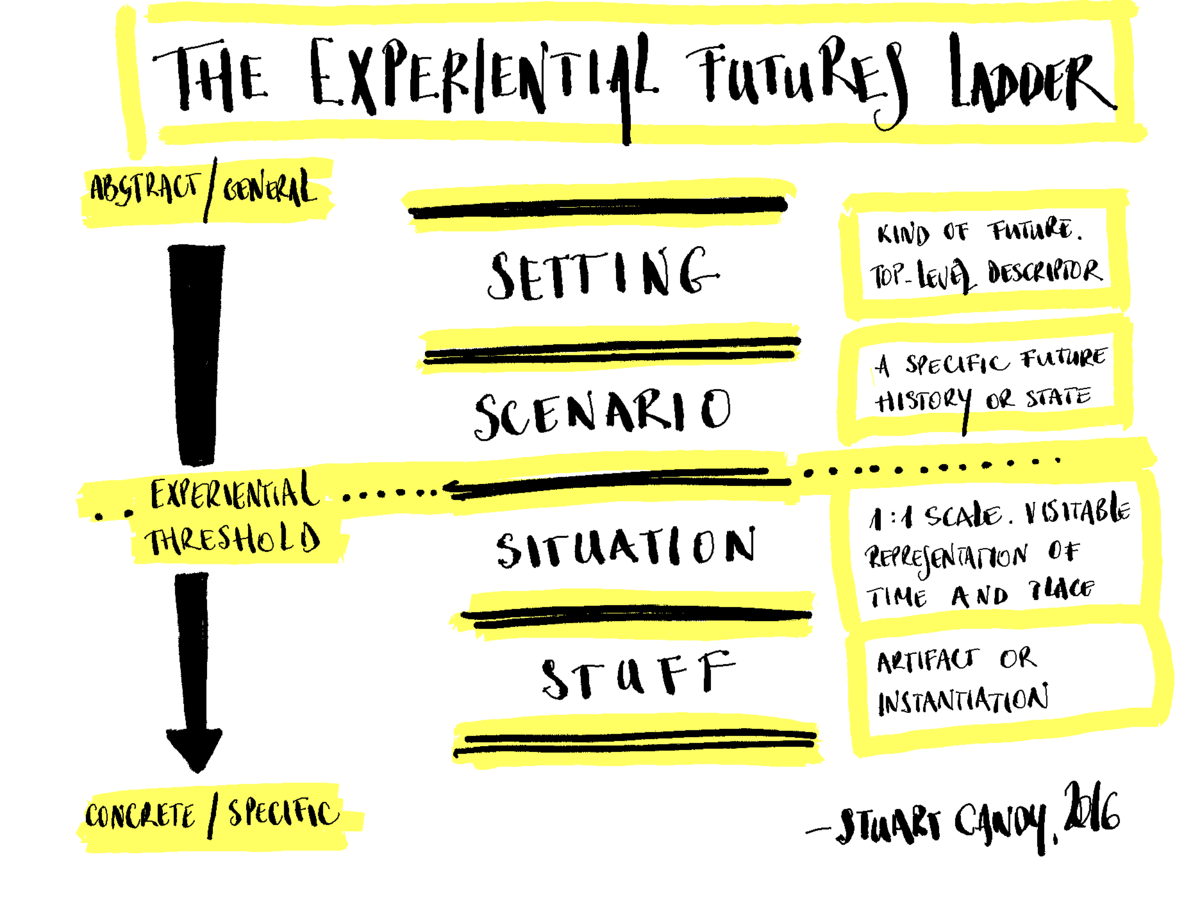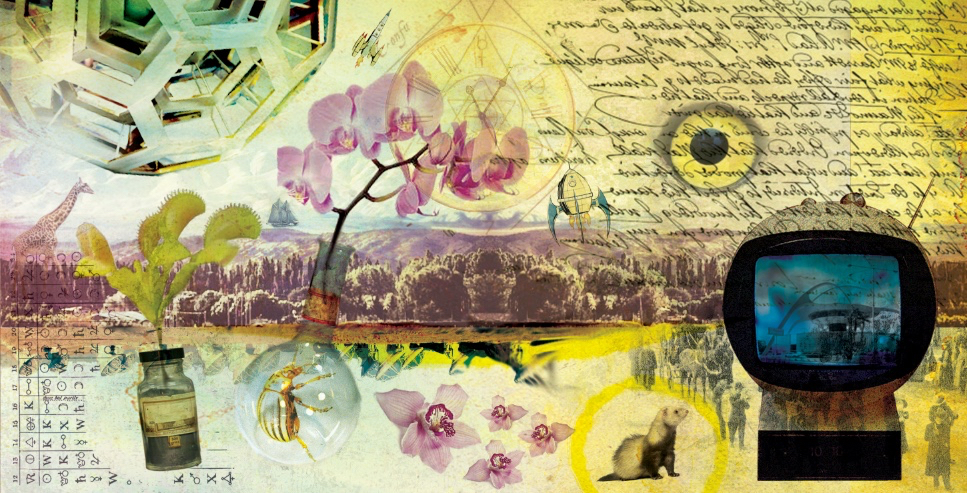Futuring at a Human Scale
FoAM’s take on the practice of Experiential Futures, as a way to explore the unknown using the wondrous aptitudes of the human sensorium in messy social situations.
Excerpts gleaned from The Art of Futuring
Getting to know the world in all its wondrous complexity calls for sensing and sense-making using both mind and body. Observing and thinking, listening and interpreting, smelling and remembering, tasting and speculating, touching and imagining, moving, acting, relating, analysing, resisting and aligning. Working together, these aptitudes generate the intricate pathways of embodied and enactive cognition, enabling sense-making in- and with the world. By using the term embodied we mean to highlight two points: first that cognition depends upon the kinds of experience that come from having a body with various sensorimotor capacities, and second, that these individual sensorimotor capacities are themselves embedded in a more encompassing biological, psychological and cultural context.
Varela, Thompson, and Rosch, The Embodied Mind: Cognitive Science and Human Experience

Experiential Futures (XF) brings the worlds of tomorrow into the present in a way that they can be encountered through the embodied human sensorium, on a 1:1 scale. In the absence of functional time-travel, such attempts rely on techniques borrowed from theatre, psychology, design, and gaming. They seek to add a multisensory dimension to foresight reports and speculative fiction, so that images of the future become tangible and explorable in direct, physical experiences.
Perhaps a human language is possible in which the intent of meaning is actually beheld in three-dimensional space.
Terrence McKenna, The Archaic Revival

Working with the embodied sense of possible futures takes more than just words. For the experience to be believable, the broad brushstrokes of a future scenario need to be filled in with the intricate details of daily life, which can include physical manifestations of food, clothing, tools, social and technological infrastructure, events, and rituals. Elaborating an experience in detail can highlight inconsistencies between a scenario’s narrative and the fragile, gritty reality of social situations and interconnected systems. By translating images of the future into their tangible, embodied manifestations, XF stresses that the gap between future visions and everyday life is not a mere matter of implementation.


The design and staging of experiential scenarios is a political, practical and perceptual-level intervention. It is praxis oriented and more than a little messy; a tactical attempt to manipulate the quirks of the human information processing system, especially our evolved preference for the immediate and tangible over the remote and abstract, to give those quirks a better chance of operating in our collective long-term interest, rather than against it.Stuart Candy, The Futures of Everyday Life
Immersive and transmedial, XF can have many guises, including installations, artefacts, games, or tactical interventions in public spaces. It portrays possible futures as if they have already happened, using digital media, physical artefacts, and in some cases even live action. XF often borrows from popular media, including memes, docufiction or advertising, lowering the on-ramp for their audiences. The experiences zoom in on concrete situations that could happen in daily life and in environments familiar (or at least known) to their audiences (for example: a family meal, a refugee camp, a suitcase, a press conference).
Calibrating Experiences of the Future

Some XF experiments borrow from live action role playing, or larping, where people improvise with a future scenario in staged, immersive, embodied social situations. Combining elements from theatre and gaming, larping can be described as a “collaborative pretending with rules”. In an XF larp, a future scenario becomes the backstory from which the larp’s gameword is derived. The players assume the role of characters in this world, acting and exploring within the structures of the game’s rules and story. The rules set the boundaries of the game, allowing participants to act as if they are part of the same world. They provide creative constraints within which future scenarios can be played out, tested, and challenged.
In larp, you usually portray a character in the same way you might in a stage play, physically acting out whatever you wish to do. Unlike a stage play, there is no script and no audience, just the setting, props, and a few details everyone has agreed on — names, relationships, and the like.
As larpers, we experience and understand the emotional content of a situation by immersing in it. (...) With immersion, we can ask questions about people's emotional relationships with a system. We can surface subtle and emergent power relations that appear as a system becomes embedded in society.
When we think about larp as immersion, we’re focusing on picking out emotions and feeling them deeply, letting them lead us where they will. When we focus on embodying, we focus on larp’s ability to make things real and to create or draw out emergent responses from systems.
Lived prototypes allow a higher-resolution collective understanding of the social dynamics of a system to emerge. When built honestly and inclusively, games for either testing a specific social script or exploring and generating alternatives also hand interpretive agency to the participant co-creators.
—Eleanor Saitta, “Infrastructural Games and Societal Play”
Images of the future that arise from such improvised experiments are influenced by participants’ beliefs and existing knowledge rather than data originating from detailed original research. Whatever they lack in objectivity or a rigorous evidence base, they make up for by providing insight into the expectations and behaviours of those involved.
The experiential approaches to futures have the potential to speak to a wide range of people. They provide ways to stretch the experience of the present moment to the temporal scales of near now and deep time alike. They can foster the emergence of an ambient foresight, where thinking and experimenting with futures becomes part of the quotidian habits and rhythms of everyday life.
Experiential Dreamscapes
Whispering Worlds into Being
“Ambient foresight” is (about) building futures awareness subtly, into the mental environment. Rather than demanding attention with fireworks, an “ambient” future awareness is gentle, or perhaps almost invisible. (…) In a society where futures are a reflexive, ordinary part of everyday life, we would be constantly envisioning, forecasting, fine-tuning and collectively deciding what to do next. We would be designing and redesigning society on a collective, ongoing basis.
Stuart Candy, The Futures of Everyday Life
Calibrating Experiences of the Future
Further reading and references.🝓